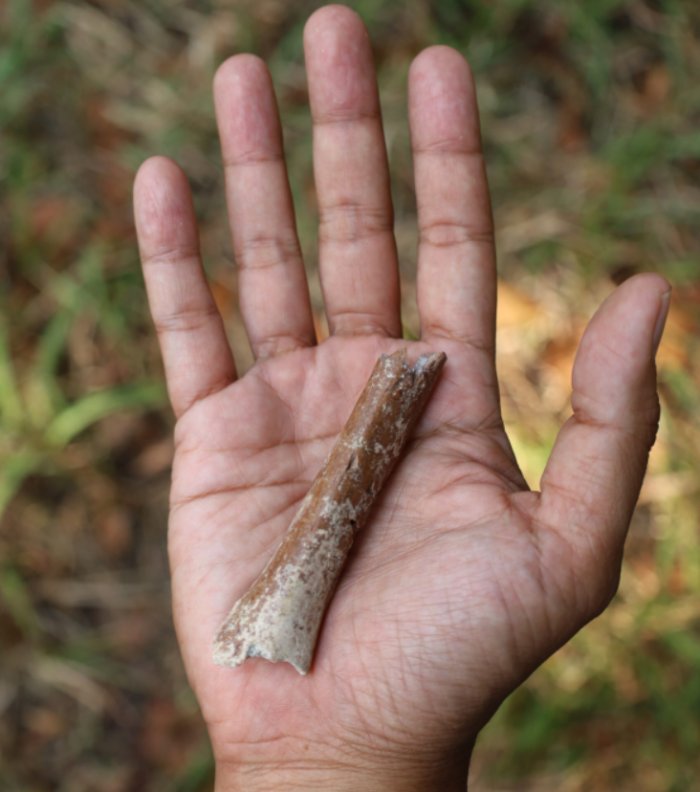Smallest Arm Bone In Human Fossil Record Illuminates Homo floresiensis Origin
Eddie Gonzales Jr. – MessageToEagle.com – A new study co-authored by Griffith University reports the discovery of extremely rare early human fossils from the Indonesian island of Flores, including an astonishingly small adult limb bone.
The recently discovered artifacts, estimated to be approximately 700,000 years old, provide significant insights into the evolutionary process of Homo floresiensis, colloquially referred to as the ‘Hobbits’ of Flores.
The Mata Menge humerus fragment (left) at the same scale as the humerus of Homo floresiensis from Liang Bua. Image: Yousuke Kaifu
The initial remains of this species were discovered in 2003 at Liang Bua cave, situated in the western region of the island. A research team co-led by the late Professor Mike Morwood (1950-2013), an Australian-New Zealand archaeologist, made this groundbreaking discovery.
However, as postcranial elements (bones from below the head) had not been found in the fossil record at this site it could not be confirmed that these So’a Basin hominins were at least as small as, if not slightly smaller than, Homo floresiensis.
It was also unclear what species the Mata Menge fossils belonged to, owing to the lack of more diagnostic specimens. However, some teeth were deemed to be intermediate in form between those of early Asian Homo erectus and Homo floresiensis.
The new study published in Nature Communications was led by Professor Yousuke Kaifu of the University of Tokyo, Iwan Kurniawan of the Center for Geological Survey in Indonesia, and Associate Professor Gerrit van den Bergh from the University of Wollongong.
The distal humerus excavated from Mata Menge. Image: Yousuke Kaifu
It reports the discovery of three additional hominin fossils from Mata Menge dating to 700,000 years ago, the outcome of several field seasons of excavations at this site. Most importantly, the new assemblage includes the first postcranial element, a distal shaft of an adult humerus (lower half of the upper arm bone).
The recovery of a fossil limb bone from the Mata Menge excavation site has been long-awaited because of the wealth of evidence it provides regarding the ancestral origin of Homo floresiensis.
New fossils from Mata Menge. Source
Digital microscopy of the microstructure indicates that the small humerus is from an adult individual. Based on the estimated length of the bone, the team was able to calculate the body height of this hominin to be about 100cm tall. This is around 6cm shorter than the estimated body height of the 60,000-year-old Homo floresiensis skeleton from Liang Bua (~106cm, based on the femoral length).
“This 700,000-year-old adult humerus is not just shorter than that of Homo floresiensis, it is the smallest upper arm bone known from the hominin fossil record worldwide,” Professor Adam Brumm from Griffith University’s Australian Research Centre for Human Evolution, a co-author of the paper. said in a press release.
Written by Eddie Gonzales Jr. – MessageToEagle.com Staff Writer













